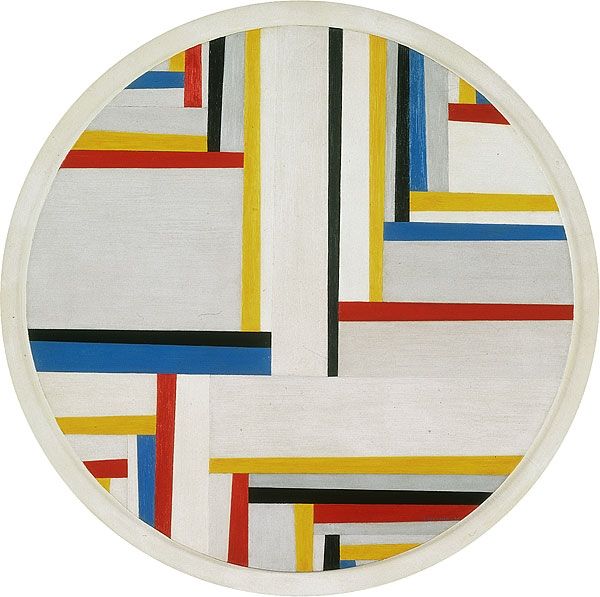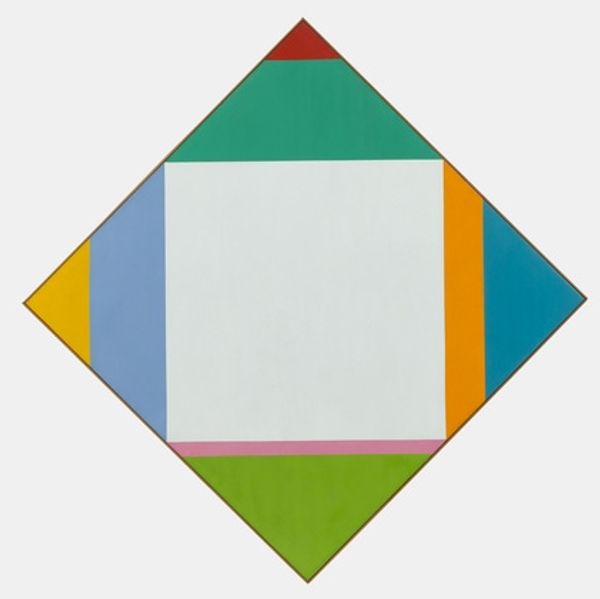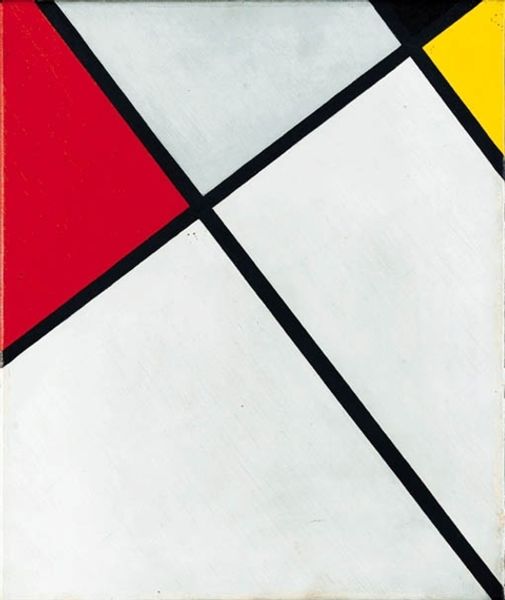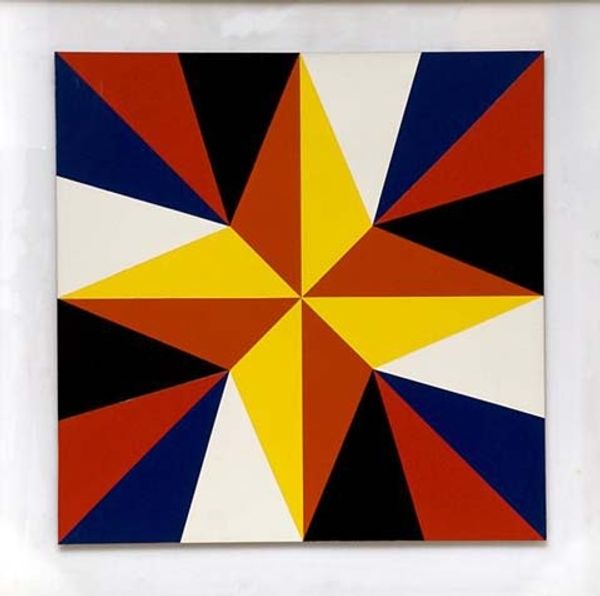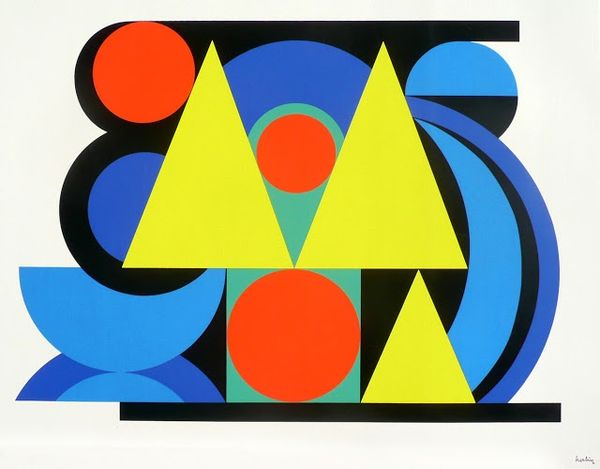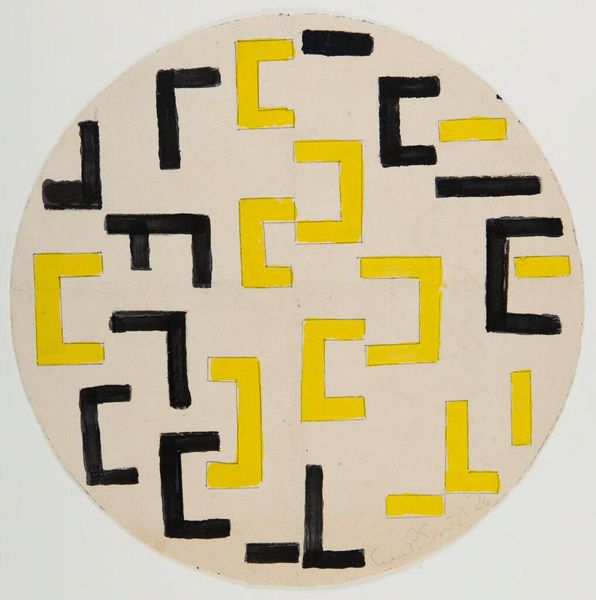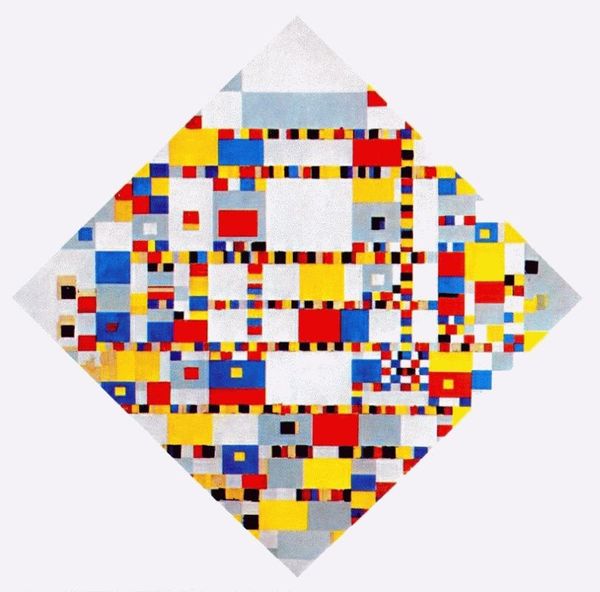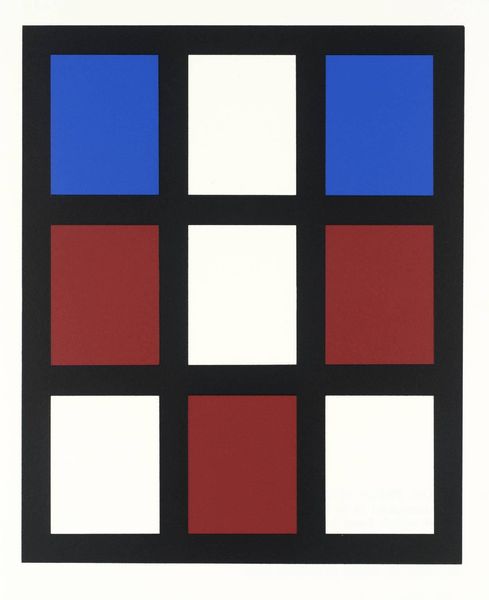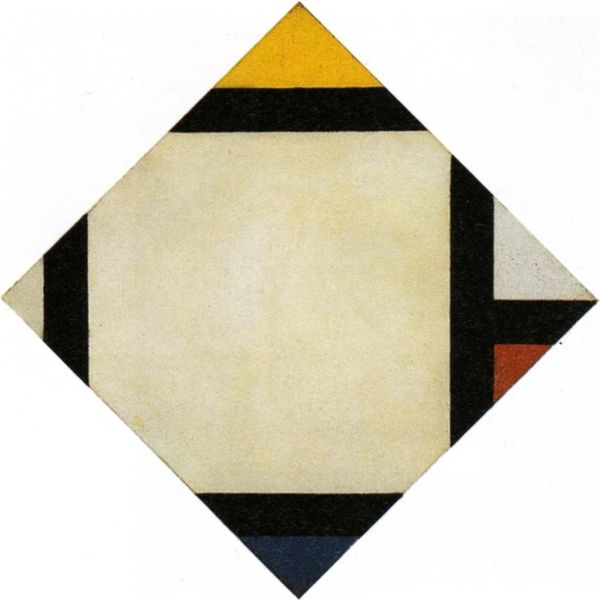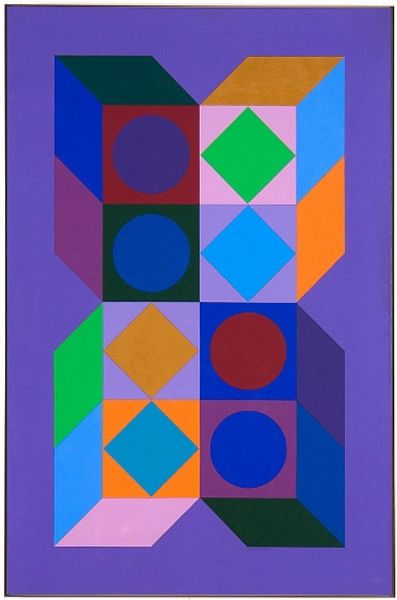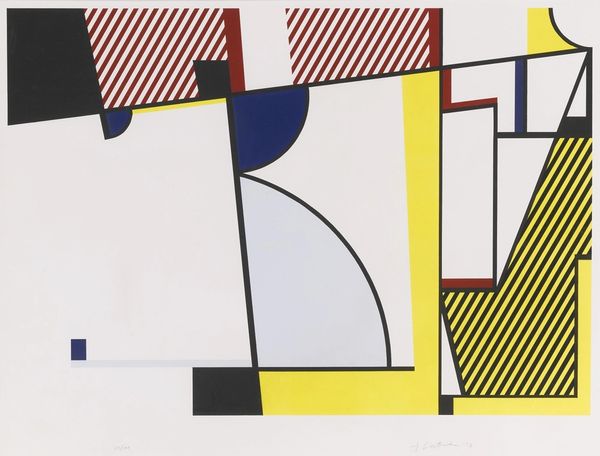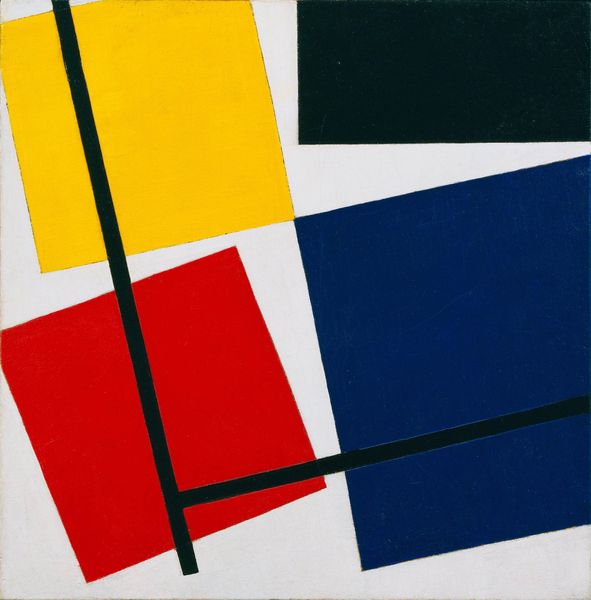
painting, acrylic-paint
#
de-stijl
#
neo-plasticism
#
non-objective-art
#
painting
#
geometric composition
#
acrylic-paint
#
abstract
#
form
#
geometric pattern
#
minimal pattern
#
geometric
#
geometric-abstraction
#
repetition of pattern
#
line
#
modernism
Copyright: Public Domain: Artvee
Curator: Here we have Piet Mondrian’s “Lozenge Composition with Yellow, Black, Blue, Red, and Gray,” painted in 1921. It's a powerful piece of geometric abstraction from his Neo-Plasticism period. Editor: Immediately, I see balance, a sort of serene order, but tilted on its axis like a kite about to take flight. Does the lozenge shape make it more dynamic somehow? Curator: The lozenge format was crucial for Mondrian. Breaking with the traditional rectangle, it introduces instability, demanding active viewing. He wanted to push beyond static representation, you see. Editor: Absolutely, those stark black lines dividing the canvas into unequal sections seem to almost vibrate against the carefully placed blocks of primary colour. I suppose there’s nothing random about them. They feel deeply intentional. What about the significance of colour, how do the individual shapes interact with each other? Curator: The restricted palette—the primaries plus black, white, and grey—represent, for Mondrian, the fundamental elements of the universe. He sought to distill reality to its purest forms, where these colours stood for opposing forces in dynamic equilibrium. Editor: Equilibrium—it's interesting. It doesn’t strike me as particularly balanced. Look at that defiant block of yellow shouting from the corner, the weight of black anchored at the lower end. And there is a small accent of red down at the bottom too... It feels as if this delicate state of perfect balance is continuously on the brink of collapse, fighting a tension held together with pure artistic intent. What do you think? Curator: Exactly. It's a dialectic—a visual argument. The asymmetry invites the eye to keep moving, to resolve the tensions, even though a complete resolution is never quite achieved, because you can not truly ever catch that perfect state, it keeps floating from you in time. Editor: Like trying to grasp smoke… I always felt that even behind his theoretical ideals, he sought freedom within constraints, a very human struggle reflected in those perfectly imperfect lines. Curator: Beautifully put. Mondrian gave us a glimpse into an idealized world, perpetually striving toward harmony, which still resonates today. Editor: A silent but persistent chord in the visual cacophony of modernity... Food for thought!
Comments
No comments
Be the first to comment and join the conversation on the ultimate creative platform.

